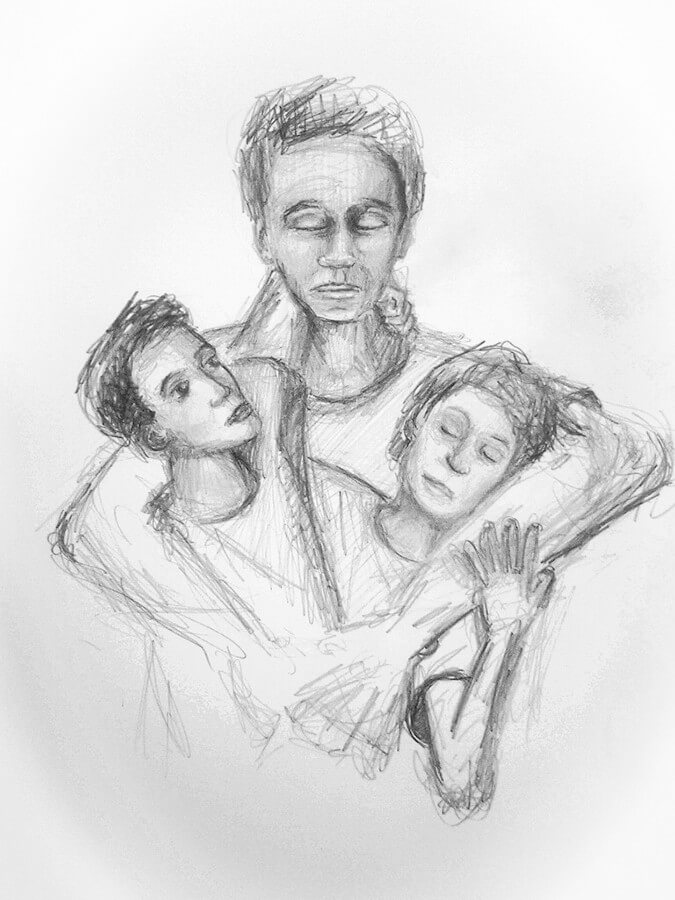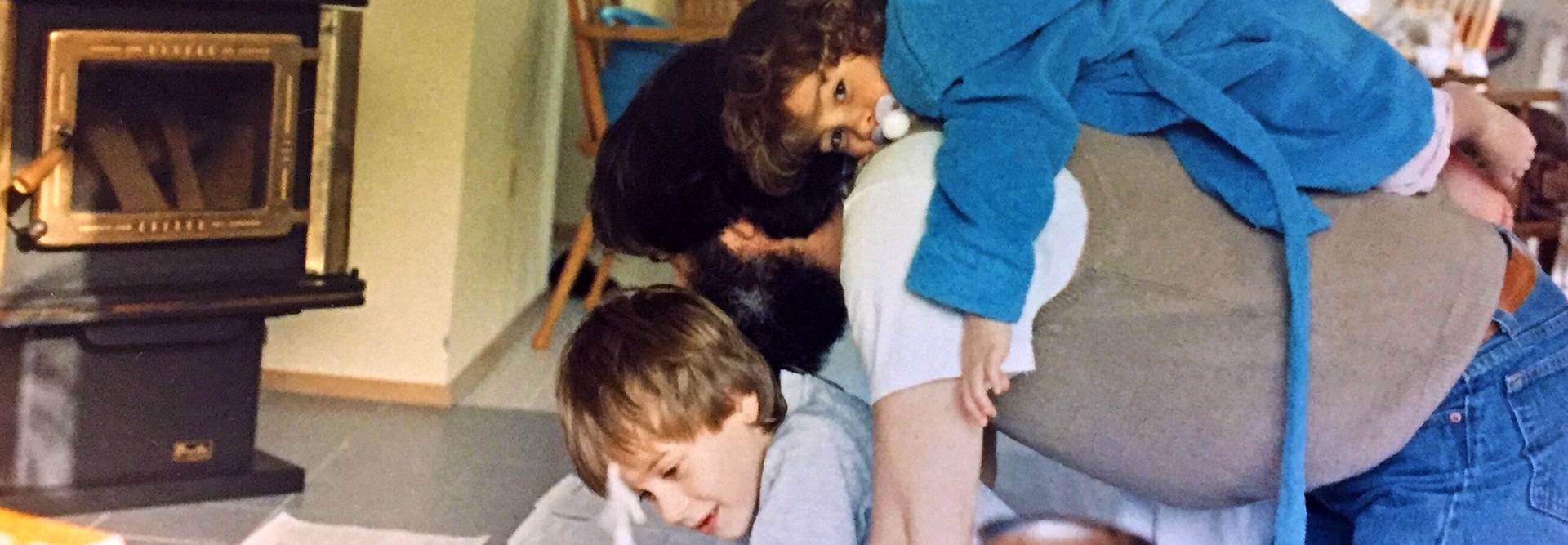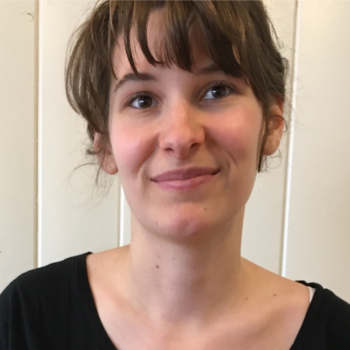You know what one of my favorite things to do is? Commuting somewhere — whether it be on a bike, in the car, or on a bus — with my stepson, answering his many questions, asking him questions of my own, and seeing where these conversations take us. I love hearing his perspective on the world, his insights, and his constant curiosities, especially about how society and communities function. These conversations remind me of vivid moments in my childhood and young-adulthood, when I would travel by car or bus with my father and have similar conversations with him. My father genuinely cared about what I had to say, and carefully listened to my questions and responses, whether I was 5 or 18, just in the way I genuinely care about what my stepson has to say. I have personally identified these conversations as a primary component of how I learned.
Reflecting on this essential part of my relationship with my stepson, and my relationship with my dad, got me thinking about what I believe is a primary component of SDE parenting: instead of trying to find the best techniques to “parent,” just be in relationship with your child(ren). I believe this is also one of the main points that Alison Gopnik illustrates in her book, The Gardener and the Carpenter:
So our job as parents is not to make a particular kind of child. Instead, our job is to provide a protected space of love, safety, and stability in which children of many unpredictable kinds can flourish. Our job is not to shape our children’s minds; it’s to let those minds explore all the possibilities that the world allows.
I recently read an article by Ozan Varol, “Stop Asking children these seven questions (and ask these instead).” Varol makes several points about ways you should interact with your children, including asking them to solve something on their own instead of handing them the answer, and giving them a (very) limited choice about which kindergarten they want to attend. Upon reading this, there were points of contention for me, such as the idea that you should think about ways to undo the harm that conventional school causes, while ignoring the possibility that you just not send children to conventional school in the first place. While this article sparked my thinking, I think that parenting and being in relationship with children goes deeper than simply, “instead of this question, ask this one instead.” While I agree with some of his ideas, and I relate to the premise of the article, I think it’s missing some key points about parenting and being in relationship with children, points that come up for me every day in my conversations with my stepson.
Discussion, modeling, and questions
Varol asserts that, when a child asks us to solve a problem, we step in too quickly to do it for them. Instead of saying, “Here’s how you do that,” Varol suggests we say, “How would you solve this problem?”

There are fine lines between being a resource for your child (or other people’s), and giving them easy answers; encouraging them to find out something on their own or helping them to find answers to their questions; and being annoying and discouraging when you refuse to answer or help at all. This completely depends on the age, disposition, and life experience of the child, of course, and many young people are prepared to find answers on their own. However, when a person of any age asks for help, it feels disrespectful and unhelpful to dismiss it with a, “figure it out yourself,” no matter how kindly worded that statement is. The difference, I believe, is that we trust that adults and older teens know when they need help, whereas younger children, we believe, do not know when they need help or when they can figure something out on their own. Therefore, we think that we, the adults, have to tell younger children when they don’t need help from us.
But what if they do know? How do we know the difference between an “easy out” and a genuine call for help? What if we just trusted them? One of the jobs of SDE mentors, facilitators, and parents is to walk that line. If I always tell my stepson, who is seven, to figure out the answer himself, he won’t necessarily know how to do it. If I model what resources he can use to find answers, and then slowly encourage him to find answers himself, that’s a better way to encourage that kind of thinking. If I answer his questions with my opinion, combined with as many objective statements as I can manage, and encourage a conversation, then the result is the kind of collaborative deep engagement and learning that I feel has occurred with both my stepson and my father. If my dad had always answered me with a “How are you going to find that out?” He would have put a full stop on any conversation I tried to initiate, and I would have stopped asking him questions, stopped engaging with him, and never would have had the deep experiences I spoke about. The truth is that it’s never black and white. In some situations you answer, in some you model, and in some you encourage them to seek answers themselves. Your relationship with the young person will help you to know which one is the best option each time.
When my stepson asked me, “Why are teddy bears a thing?” for example, I said, “I don’t know, let’s find a YouTube video. Do you have any ideas?” I sometimes respond to these questions with “let’s find a book”, or “we can look it up”, or, way too often, “let’s ask your dad.” I know that by offering these suggestions I am giving examples for ways he can find information for himself in the future.
Authentic conversations or hidden learning agenda?
Another thing that is incredibly important in relationships — and especially ones that involve an adult and a young person — is the presence of genuine curiosity, as opposed to false curiosity in order to get a desired result. For example, if I ask my stepson what his idea about teddy bears is, and the only reason I ask is to try to “foster critical thinking,” or I have some other agenda attached to making our interactions a “learning experience,” it’s not an authentic interaction. I absolutely believe that young people can tell the difference. I believe that they can tell when we have a hidden agenda. If I ask because I’m genuinely curious what he thinks about teddy bears (which, by the way, I was), it’s an authentic conversation and builds our relationship, and the learning that happens is a natural side effect of living our lives together.
Fear fuels the fire
Much of what this comes down to is fear.
I think a lot of people are afraid to simply be in relationship with their children because they think they will lose their authority, and therefore their control, over their children.
I believe that parents are focused so much on learning outcomes and critical thinking because they worry that without that agenda at the core of what they’re doing, then their kids won’t learn anything, or will miss out on an important skill.
Whether we like it or not, we are always modeling. A child will pick up on our traits and our values, and, if those values are authentically being lived as a part of our lives, they will come to value them as well. Your child’s thinking will change based on conversations they have with you, and others around them. They will change based on your relationship with them, and how you live that relationship. They will know what you consider to be important because it is clear in your actions and your words in daily life. If you are a critical thinker, and have genuine conversations with them fueled by curiosity and relationship, then they will be critical thinkers. Not because you’re trying to get that outcome, but because it’s a part of what you’re doing with them and it becomes natural to them.
There are nuances we can barely explain, which is why trusting yourself, your child, and your relationship is, I believe, at the heart of Self-Directed Education. And for me, it is always at the heart of conversations.
If you enjoyed this article and feel called to give back to ASDE, here are ways you can support our work:
- Donate money
- Share our content with others! Click one of the buttons above to easily share on Twitter, Facebook, or email.
- Consider becoming a Contributor for Tipping Points
Tipping Points Magazine amplifies the diverse voices within the Self-Directed Education movement. The views expressed in our content belong solely to the author(s). The Alliance for Self-Directed Education disclaims responsibility for any interpretation or application of the information provided. Engage in dialogue by reaching out to the author(s) directly.






